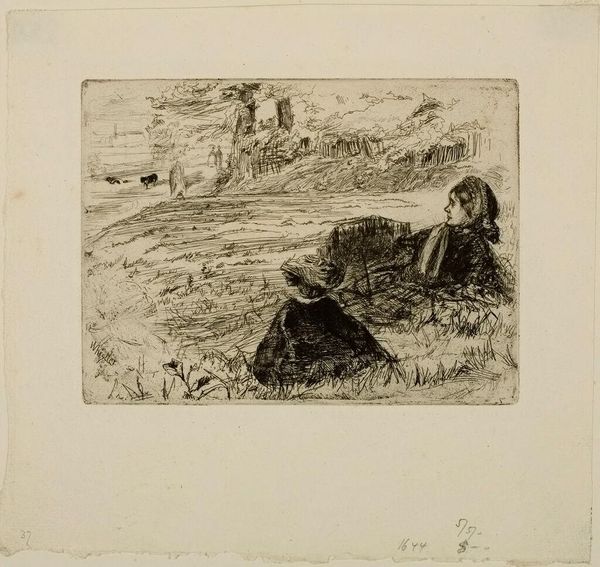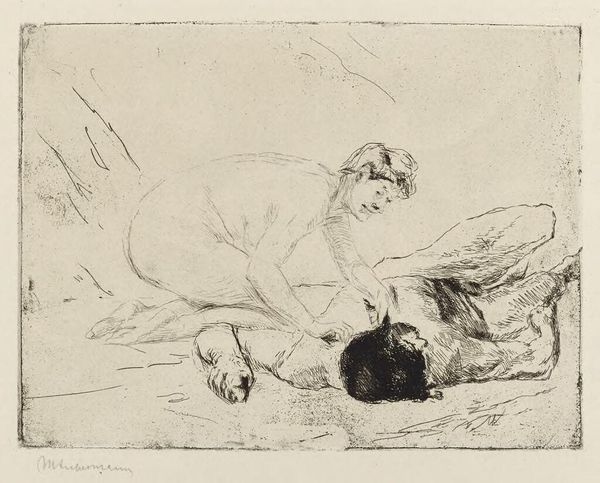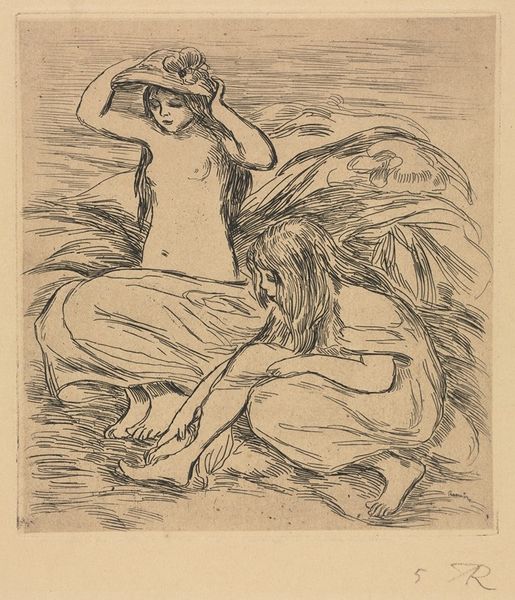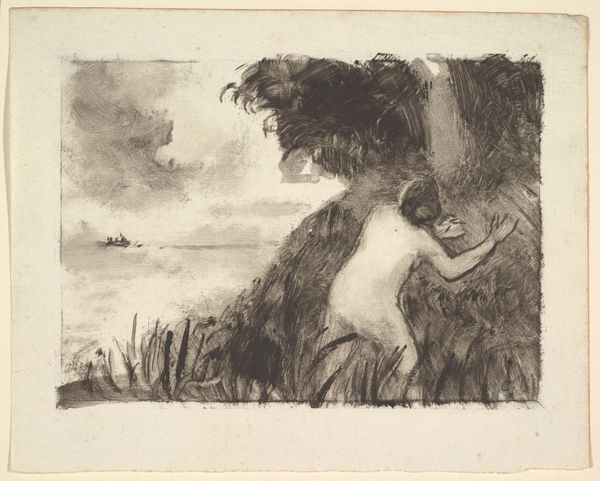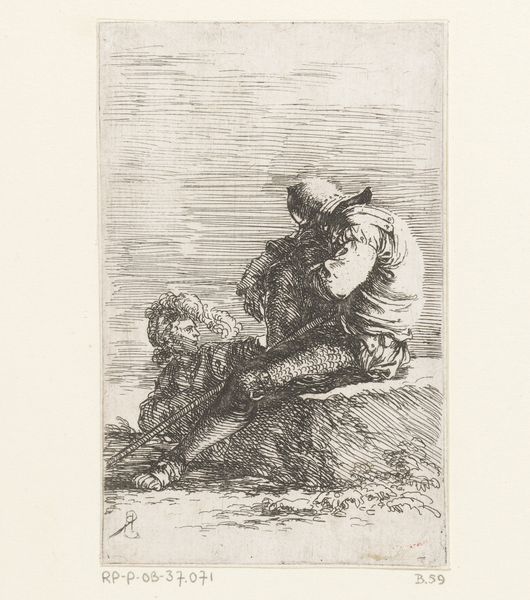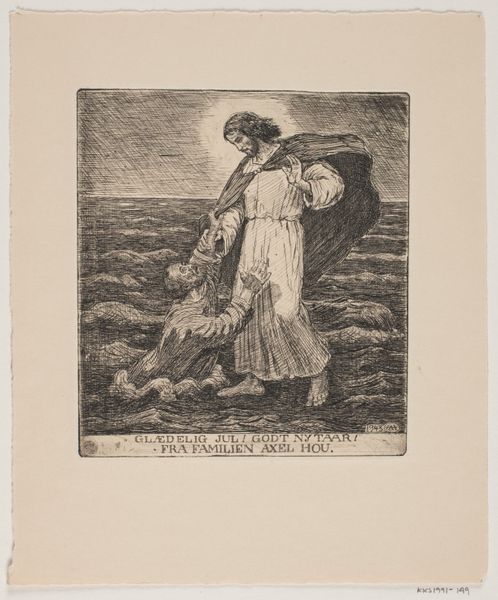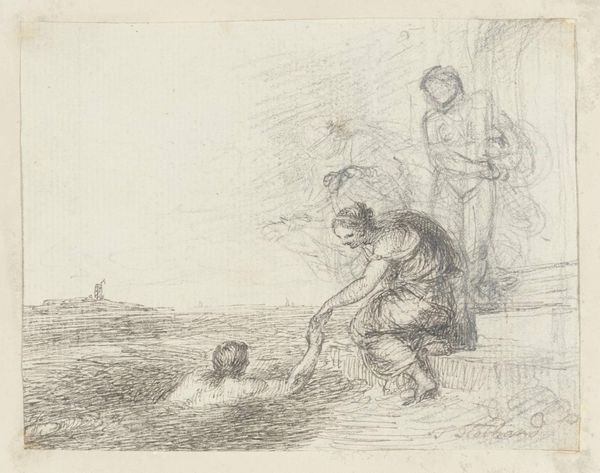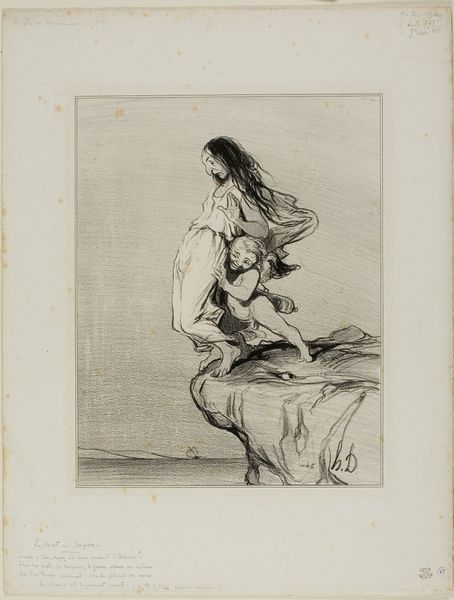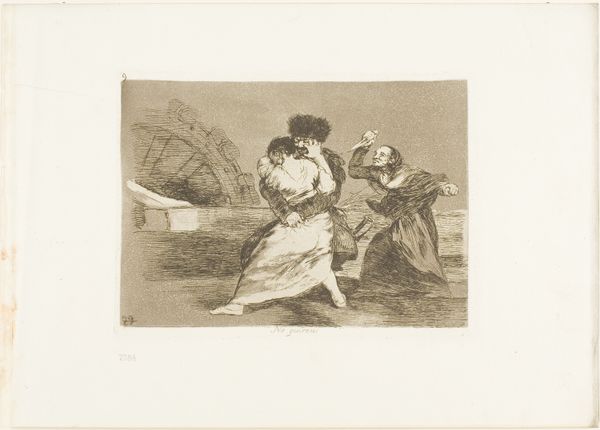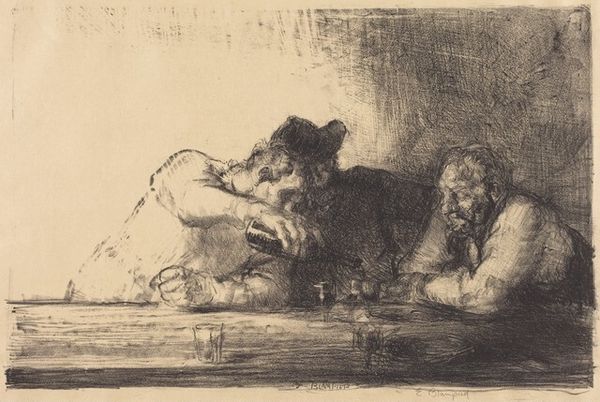
painting, watercolor
#
painting
#
landscape
#
figuration
#
watercolor
#
symbolism
#
mixed media
#
watercolor
Copyright: Public domain
Curator: This mixed-media work is entitled "(Orpheus)," crafted in 1898 by the Australian artist Rupert Bunny. Editor: It has this melancholic, almost mournful quality, doesn’t it? The figure, the desolate shoreline... Curator: Bunny employed watercolor and other media to create it, a relatively humble choice which, given its symbolism, opens a discourse around what we define as valuable art-making. It is so poignant because Orpheus represents art, loss, the feminine divine, and more—juxtaposed against the production choices Bunny made. It demands consideration of the artwork’s place as commodity. Editor: Exactly, this representation goes beyond surface sadness, delving into profound depths about the marginalization and the silencing of marginalized voices throughout history, using Orpheus as an entry point into a discussion around power. This is a story of systemic and institutional inequalities that continue into the present day. How does this composition mirror this inequality and silencing, for example? The clouds feel more gestural and loose in texture while Orpheus' posture appears almost like it is recoiling from his final breath; we witness how vulnerable individuals are in moments of political tension. Curator: It's interesting to think of the contrast between the figure, rendered in relatively soft lines and delicate washes, against the implied power of the vast, turbulent sea. What this represents from an aesthetic perspective is significant—what we decide is suitable in our material explorations and methods is so intrinsically entwined with what statements these choices end up making. Editor: The use of watercolor gives it an ephemeral quality that echoes themes of grief and remembrance. Also, that gesture. It reads so physically to me: an articulation of rage and pain transformed into an internal struggle as his expression twists between agony, guilt and catharsis. How often is emotion a luxury? How often are expressions controlled and policed? It makes the statement here all the more intense in what is otherwise such a soft visual experience, thanks to Rupert's methods of creation. Curator: Considering Bunny's broader oeuvre and historical context helps solidify our reading here too, revealing a conscious subversion through materials. I find the interplay of concept and making especially evocative, offering insights into how meaning is shaped through every layer of creative action. Editor: I appreciate your breakdown of this interplay between conceptualization, method, and resulting emotions. By understanding this art, perhaps we become attuned to identifying these voices and methods as they take place, so we become able to build our community awareness around current struggles for equity today.
Comments
No comments
Be the first to comment and join the conversation on the ultimate creative platform.
